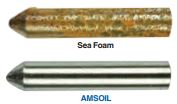How to Store Your Lawnmower in Winter Proper storage ensures your lawn equipment will run well for years. September 26, 2023 Winter is on the horizon and it’s time to store your lawnmower and other lawn and garden equipment through the colder months. The following tips will help you maximize the life and performance of […]
You are browsing archives for
Tag: lawnmower
Don’t Give Up! The Secrete to Fixing a L
How to Fix a Lawnmower Pull Cord John Baker|Dec 09, 2019 2:34 PM Few things are more frustrating than going to cut the grass or clear your driveway of snow and ending up with the starter cord in your hand. Eventually, it happens to everyone. When it does, check out this video on how to […]
Small engine won’t start? Identifying th
Small engine won’t start? Bad gas is the number-one reason, and here’s how to prevent it. Len Groom | TECHNICAL PRODUCT MANAGER, POWERSPORTS In northern Minnesota, where I live, the temperature occasionally breaks 80ºF (27ºC) in the summer. When it does, it’s time to fire up my Jet-Skis* and hit the lake. The last thing […]
Which Small-Engine Oil Would You Choose?
Which Small-Engine Oil Would You Choose? Spring marks the time to store your snowblower and prepare your lawnmower, pressure washer, generator and other equipment for another season. Make sure to change oil before storing equipment. Used oil contains acidic byproducts that can damage the engine if allowed to sit for months. If you neglected to […]



